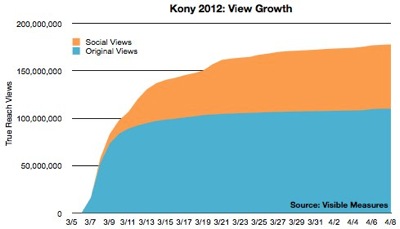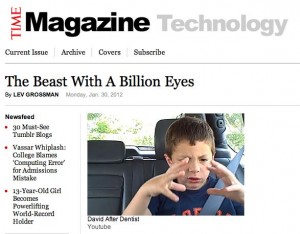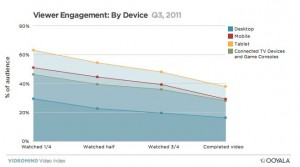
Why did Kony 2012 go viral? More than 30 million views in the last 24 hours, and likely well past 40 million total by the time you read this. Sure the story is being picked apart as I type, but let’s stay focused…
So what made this 30-min documentary viral? We asked the author of Beyond Viral for answers, and he provides 13 reasons:
1. USING SOCIAL MEDIA: The film begins by meeting people where they are… on social media’s impact. The Invisible Children (the organization behind the film) are clearly skilled social-media users. The film urges you to pay attention as part of an “experiment,” and shows many other US students and children already engaged. Many of his “calls to action” ask people to leverage what they already use: Facebook, Twitter, YouTube.
2. TIMING: presents a countdown clock as if it’s live. He presents 2012 as the year that we will stop Joseph Kony (the rebel leader).
3. LANGUAGE: In one clip in a public forum, the film’s director (Invisible Children co-founder Jason Russell) is seen saying: “Who are you to end a war? I’m tell you who are you not to.” It’s very Kennedy, and the video’s script is loaded with powerful language that forges allegiance to its cause. “Crucial time in history where what we do (or don’t do) will effect generations to come.” “We are shaping human history.”
4.
PERSONAL: The film personalizes the creator by showing his child’s birth and progress (and the son happens to be adorable). Russell personalizes the threat by showing an individual (Jason) who he’s met. And Jason’s brother was killed by the “rebels” while he watched. Even when we see children crowded into inhumane sleeping conditions, we don’t lost the focus on Jason.
5. VILLAIN: At 7:25 we see this get very emotional. Most importantly, the director focuses on one individual (Joseph Kony) to create an “Osama Bin Laden” focus. Almost every good story needs a villain or foil, and it’s far more achievable to stop Kony than to stop rebels. (News reports this morning had skeptics suggesting someone else will simply replace him).
6. THROUGH EYES OF CHILD: We see Russell explaining to his own son about this cause. Again we see the story focused on Jason and Kony. Gavin’s reaction is extremely powerful. “It’s sad,” he says, watching with crinkled brow.
7. JUST ENOUGH: The crimes by Kony are horrifying and the director provides us with visual storytelling that reinforce that fact… without making it horrible to watch.
8. THEY SAID WE’D NEVER WALK AGAIN. One of the most powerful influencers is resistance. How many patients say a doctor “said I’d never walk again”? It creates a force in the opposite direction. The filmmaker says his talks in D.C. have been met with indifference… He said everyone he spoke to said, “there’s no way the US will ever get involved in a conflict where our national security or financial interests aren’t at stake.”
9. CROWD MORNING: At 14:30 we get the sense the train is in motion. He shows progress and normalizes the participation in the cause. He talks of “building a community” around the idea that “Where you live shouldn’t determine whether you live.”
We see an “army of kids” that stand in defiance to the war. At 17:09 we’re treated to a powerful musical segment that shows progress to date.
10. SUCCESS. ALMOST THERE. At 18:30 we see “what I was told would never happen” occur: Obama pledged troops to Uganda in October 2011… to “assist” and “advise” not to fight. The move, states the director, was a first: The US participated “not for self defense but because it was right.”
11. WILL YOUR CONSCIENCE LET YOU DO NOTHING? The film waits until 21:12 to make Hitler and holocaust references. Most of us believe we’d have taken action against the holocaust, and now Russell makes maintaing that that belief difficult (if we do nothing here).
12. TAPPING CELEBRITIES AND POLICY MAKERS: At 23:00 we are invited into a personal appeal to celebrities and 12 policy makers. Now viewers know who to reach. “We’re making Kony world news,” Russell says. Little did he know how this video would shake online and offline news.
13. GET YOUR KIT: The 26th minute shows social cause marketing at its finest… a pack of info with a bracelet that’s numbered. A specific date where posters will be placed all over the world.

What do you think? Why did this spread so quickly when there are surely other atrocities like it?












